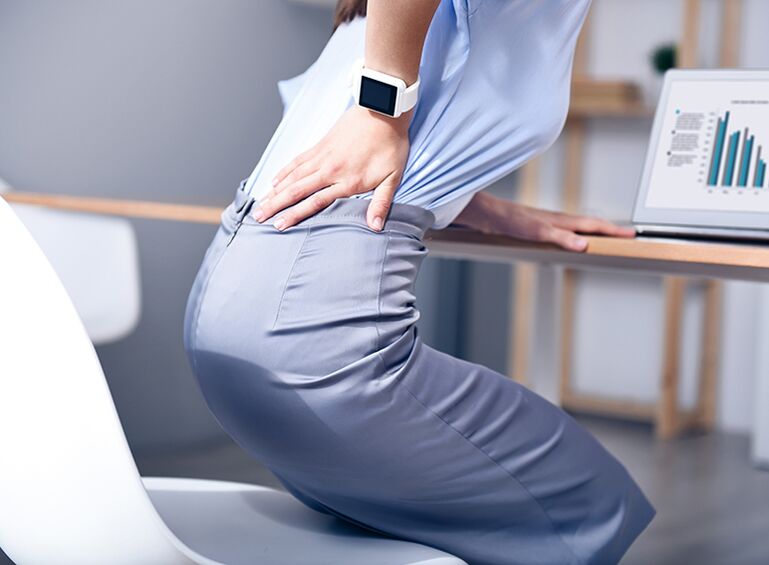First of all, the doctor notes that, as a rule, there should be no lower back pain at all:

If the pain syndrome rarely occurs - for example after lifting weights, exercising or an uncomfortable position - then this is a variant of the norm. However, if the pain occurs regularly - every time after sitting in an uncomfortable chair - this is a reason to be careful and look for the cause.
With pain that occurs every six months or a year only after traumatic factors, you can not rush to the doctor. However, if the pain syndrome becomes chronic or goes into a stronger phase and then returns to the lungs, this is already a reason to see a specialist. The neurologist adds:
In addition, the reason for making an appointment with a specialist can be a single, but unfounded, acute pain, as well as a sharp increase in pain syndrome. Especially if the pain radiates to the leg or other parts of the body. This can be accompanied by other unpleasant sensations: loss of sensitivity, "goose bumps" on the skin, burning. In such cases, you need to go to the doctor.
Why can the lower back hurt?
According to the doctor, a common cause is myofascial pain syndrome, i. e. pain associated with abnormal muscle tension in the lumbar area.
The pathological muscle syndrome occurs precisely because we sit uncomfortably, strain ourselves physically, lift weights, - says the doctor. As a result, the muscles cramp. But more often there is compression of the root in the spine - this is a different, neural type of pain.
The neurologist explains that roots leave the spinal cord and extend into different parts of the body, including the lower back. And when pressure is put on these nerves, pain can be felt in different parts of the body: in the thighs and tailbone, sacrum and even in the abdomen.
The third option is the pathology of the internal organs. These can be kidney and bowel problems as well as urological or gynecological problems. In this case, back pain acts as a signal for the presence of other diseases.
We also add that the pain itself is of two types: nociceptive (i. e. , inflammatory) and neuropathic.
The first is associated with inflammation in muscle fibers - it is manifested in myofascial pain syndrome and is associated with a traumatic factor. This pain is usually dull and draws with an increase in local temperature when the lower back is hot to the touch.
Neuropathic pain expresses itself differently: it is a burning sensation, goose bumps, numbness, coldness, loss of sensitivity. Even a small injection into the lumbar spine can make the pain worse. If you experience such symptoms, urgently see a neurologist. And in general, the answer to the question of which doctor to go to if you have back pain is clear: the neurologist.
Can pain be treated at home?
Some people think that replacing the chair will solve the problem with lower back pain. The neurologist is certain: it is always easier to see a doctor.
Of course, you can swap out your chairs individually for more comfortable ones. But it may turn out to be not the question. Although you should have a comfortable office chair to work anyway, it would be nice to get up every two hours and do some exercise: bend over, bend over to change the position of your lower back.
A pillow or roll placed under the back works on a similar principle:
We sat down as always, then we put a pillow. We stayed in this position for a while - they removed it again, - advises the neurologist. - Such a lumbar support is also useful. You can change the angle of the monitor by sliding it slightly to the right or slightly to the left. This changes the load - both on the lower back and in the chest area and neck.
Now, if you need to relieve the condition, the doctor advises that only dry heat should be used to treat lumbar pain:
In this situation, there is no way you should go into a hot bath. But electric and salt heating pads (in the shape of bags that grandmothers used to make) help a lot. Different applicators work too. These are carpets with needles: if you lie on them, the muscle tone disappears.
To do this, the doctor recommends combining a short course of treatment with nonsteroidal anti-inflammatory drugs and using a local anti-inflammatory ointment:
When you've done all of this and the pain is over in 3-4 days there are no problems you might say. If the pain does not subside, there are no more options: you must definitely see a doctor.

























